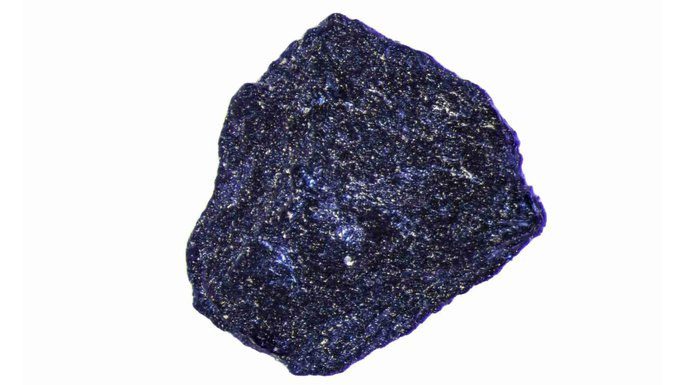Transitioning from blue to pink and then to red, “redmatter” has just been created in the laboratory by “materials wizard” Ranga Dias and his team, promising to change the world.
Redmatter is described as a “very red” superconducting material, produced through a modern “alchemy” process: Mixing a rare earth metal called lutetium with hydrogen and a small amount of nitrogen, allowing them to react for 2-3 days at high temperatures.
The Independent quotes scientists’ descriptions: In the laboratory, under high pressure and extraordinary reactions, the original blue mixture gradually shifts to pink and achieves a superconducting state, then continues to turn dark red in a non-superconducting state.

New material before high pressure changes color to achieve superconducting state – (Photo: Ranga Dias).
To function, the material needs to be heated to 20.5 degrees Celsius and then compressed at a pressure of about 145,000 psi, which allows it to regain its superconducting ability – the very capability that could change the world.
Superior to gold, this superconducting metal can conduct electricity in a dream state: With no electrical resistance. This allows it to help create power grids with the highest efficiency, saving up to 200 million megawatt-hours lost due to resistance from current technologies.
It could also contribute to nuclear fusion, a long-awaited technology for generating limitless power. Additionally, it has the potential to enhance technologies in high-speed trains, maglev trains, and new medical devices.
This groundbreaking material was developed by a research team led by Professor Ranga Dias from the School of Engineering and Applied Sciences at the University of Rochester (USA).
Professor Dias had previously discovered two other materials, slightly less groundbreaking but still exhibiting incredible superconducting properties, reported in two studies published in the scientific journals Nature and Physical Review Letters. However, the article in Nature was later retracted due to an ongoing dispute.
The advanced superconducting material, redmatter, was recently described in a new report published in Nature on March 10.





















































